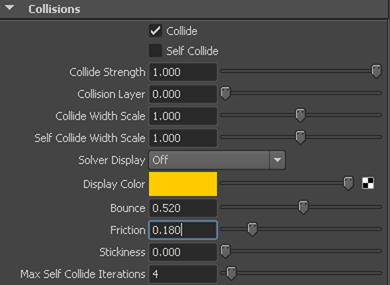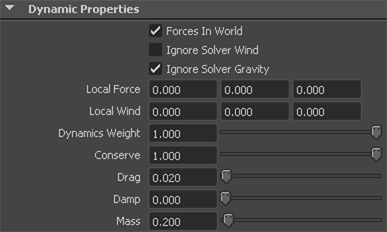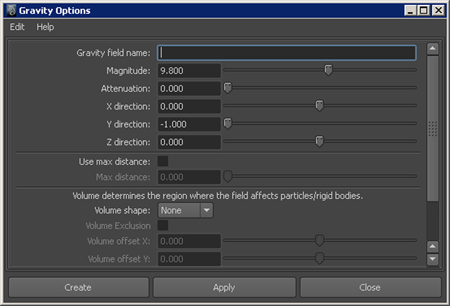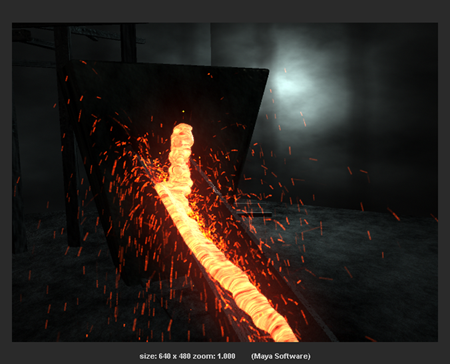For a spark effect, it's important to generate the arcing motion of typical hot sparks. Real sparks are a very small amount of red-hot matter which allows them to travel quickly through air. As sparks cool they slow down and eventually begin to fall. This creates the characteristic arcing motion.
To create this motion, you decrease the mass of the sparks and increase the amount of drag acting on them. You then add an external Gravity field to pull the sparks to the foundry floor.
Increasing the Bounce and Friction makes the sparks behave more realistically when they collide with the foundry floor, slag chute, and bin.

Increasing Drag adds air resistance to the particles as they fly, slowing them down a little. This will allow the external Gravity field, which you add later, to have more of an effect on the sparks.
Decreasing the Mass lets the sparks fly higher, generating a more pronounced arc effect when external Gravity pulls them down.

The sparks are flying a little higher and less chaotically than before.

By default, the nucleus node applies forces such as wind and gravity to nParticle. You can turn these forces off, and instead apply Maya fields to nParticles. When creating an nDynamics simulation, external fields are useful for controlling individual Nucleus objects.
To create an external gravity field
 .
.
The Gravity Options window appears.

The sparks now travel in an arcing motion as they fall to the foundry floor.

 Except where otherwise noted, this work is licensed under a Creative Commons Attribution-NonCommercial-ShareAlike 3.0 Unported License
Except where otherwise noted, this work is licensed under a Creative Commons Attribution-NonCommercial-ShareAlike 3.0 Unported License